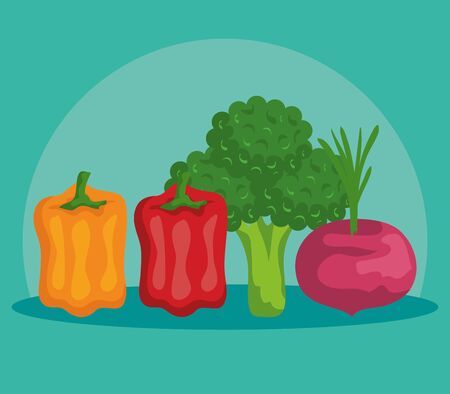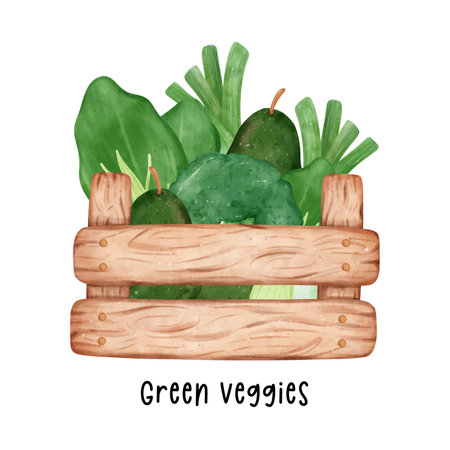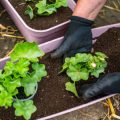1. Choosing the Right Location and Materials
Starting an organic vegetable garden in raised beds is a smart way to grow fresh, healthy produce right in your backyard. One of the first steps is picking the best location and materials for your raised beds. Where you place your beds and what you build them with can make a big difference in how well your veggies grow.
Find the Best Spot for Your Raised Beds
Your vegetables need plenty of sunlight, so choose a location that gets at least 6 to 8 hours of direct sun each day. If possible, pick a spot thats also sheltered from strong winds but has good airflow to help prevent disease. Easy access to water is another important factor—make sure youre close enough to a hose or water source so watering isnt a hassle.
Sunlight Needs by Vegetable Type
| Vegetable Type | Sunlight Requirement |
|---|---|
| Leafy greens (lettuce, spinach) | 4–6 hours |
| Root vegetables (carrots, beets) | 6+ hours |
| Fruit-bearing (tomatoes, peppers) | 8+ hours |
Choosing Eco-Friendly and Durable Materials
When building your raised beds, its best to use materials that are safe for organic gardening and built to last. Avoid treated wood that may contain chemicals harmful to your soil and plants. Instead, go for natural, rot-resistant woods like cedar or redwood. Recycled composite boards or galvanized steel are also great options if you’re looking for something long-lasting and low maintenance.
Common Raised Bed Material Options
| Material | Pros | Cons |
|---|---|---|
| Cedar or Redwood | Naturally rot-resistant, chemical-free, attractive look | More expensive than other wood types |
| Pine (untreated) | Affordable and easy to find | Lacks durability; may rot within a few years |
| Recycled Composite Boards | Eco-friendly, very durable, no maintenance needed | Can be pricier upfront |
| Galvanized Steel Panels | Long-lasting, modern look, termite-proof | Might heat up in full sun; more industrial appearance |
A Few Extra Tips for Success
- If you have clay or compacted soil underneath, consider lining the bottom with hardware cloth to keep out gophers and moles.
- Aim for bed dimensions that make it easy to reach the center—typically 3 to 4 feet wide.
- The depth should be at least 10–12 inches to give roots room to grow.
- If youre gardening on concrete or a patio, make sure theres proper drainage by drilling holes in the base or raising the bed slightly off the ground.
Selecting the right location and materials will set you up for success as you start your organic raised bed garden. With good light, smart design choices, and safe materials, youll be ready to grow healthy vegetables all season long.
2. Building and Preparing Your Raised Beds
Creating a raised bed for your organic vegetable garden is a great way to improve soil quality, manage weeds, and boost drainage. Let’s walk through the simple steps for building your own raised beds and filling them with nutrient-rich, organic soil blends that set your plants up for success.
Choosing the Right Location
Pick a spot that gets at least 6–8 hours of sunlight per day. Make sure the area is level and has good drainage to prevent water from pooling around your plants.
Materials You’ll Need
You don’t need fancy tools or expensive materials. Here’s a basic list of what you’ll need to build a simple wooden raised bed:
| Material | Details |
|---|---|
| Untreated Lumber | Cedar or redwood are naturally rot-resistant and safe for organic gardens. |
| Screws or Nails | Use galvanized screws to prevent rusting over time. |
| Drill or Hammer | To assemble the frame securely. |
| Level | Helps ensure your bed is even on all sides. |
| Landscape Fabric (optional) | Can be used at the bottom to suppress weeds while allowing drainage. |
Step-by-Step Assembly Guide
- Cut the Lumber: For a standard 4×8 ft bed, cut two boards to 4 feet and two to 8 feet in length.
- Assemble the Frame: Screw or nail the boards together at the corners to form a rectangle.
- Place on Site: Position the frame in your chosen location and check with a level.
- Add Landscape Fabric: (Optional) Line the bottom if needed for weed control.
Selecting an Organic Soil Blend
A healthy blend of organic soil provides nutrients, supports drainage, and promotes root growth. Here’s a simple mix you can create at home:
| Ingredient | Ratio | Description |
|---|---|---|
| Compost | 50% | Packed with nutrients; make your own or buy certified organic compost. |
| Coconut Coir or Peat Moss | 25% | Improves moisture retention; coir is more sustainable than peat moss. |
| Vermiculite or Perlite | 25% | Adds aeration and helps prevent soil compaction. |
Topping Off Your Raised Bed
Once your frame is built and placed, fill it with your soil blend up to about an inch from the top. This space allows for watering without overflow. Gently rake the surface smooth and let it settle for a few days before planting.
A Few Extra Tips
- If building multiple beds, leave enough space between them (at least 2–3 feet) for easy access with tools or wheelbarrows.
- Add mulch after planting to retain moisture and block weeds naturally.
- Avoid using pressure-treated wood in organic gardens as it may leach chemicals into the soil.
Your raised bed is now ready for planting! In the next section, we’ll explore how to choose the right vegetables for your climate and growing season.

3. Selecting Organic Vegetable Varieties
Choosing the right vegetable varieties is a key part of growing organic vegetables successfully in raised beds. When youre gardening organically, its important to start with seeds or seedlings that align with your organic practices and are suited to your local climate.
Look for Non-GMO, Heirloom, and Certified Organic Seeds
When shopping for seeds, check the labels carefully. Heres what to look for:
| Type | Description |
|---|---|
| Non-GMO | Not genetically modified; a must for organic gardening. |
| Heirloom | Passed down through generations; often open-pollinated and flavorful. |
| Certified Organic | Grown without synthetic pesticides or fertilizers; USDA-certified. |
Select Varieties That Match Your USDA Hardiness Zone
The USDA Plant Hardiness Zone Map divides North America into 13 zones based on average minimum winter temperatures. Knowing your zone helps you pick vegetable varieties that will thrive in your area. For example, tomatoes that grow well in Zone 9 may not perform as well in Zone 5 due to shorter growing seasons or cooler nights.
How to Find Your Zone:
- Visit the USDA Hardiness Zone Map.
- Enter your ZIP code to find your zone.
- Select seed varieties labeled for your specific zone or climate conditions.
Match Vegetables to Seasonal Conditions
Certain vegetables do best in cooler months, while others need warm soil and long sunny days. Heres a quick guide:
| Season | Crops to Grow |
|---|---|
| Cool Season (Spring/Fall) | Lettuce, spinach, kale, peas, radishes, broccoli |
| Warm Season (Late Spring/Summer) | Tomatoes, cucumbers, peppers, beans, zucchini, corn |
Sourcing Quality Seeds and Seedlings
You can buy organic seeds and seedlings from local nurseries, farmers markets, or reputable online stores. Look for companies that specialize in organic gardening and clearly label their products as non-GMO and USDA Certified Organic.
A Few Trusted Organic Seed Suppliers in the U.S.:
- Seed Savers Exchange
- High Mowing Organic Seeds
- Johnnys Selected Seeds (look for organic options)
- Baker Creek Heirloom Seeds
Selecting the right seed varieties sets the foundation for a healthy, productive organic garden. By choosing seeds that match your climate and values, youll be one step closer to enjoying fresh vegetables straight from your raised bed garden.
4. Organic Planting and Crop Rotation Tips
Growing organic vegetables in raised beds is not just about using natural methods—its also about planting smart. Proper plant spacing, companion planting, and crop rotation are key techniques that help your garden thrive while keeping pests away and soil nutrients balanced.
Proper Spacing for Healthy Growth
Giving your plants enough room to grow helps them get the sunlight, air circulation, and nutrients they need. Crowded plants are more likely to develop diseases and attract pests. Check seed packets or plant tags for recommended spacing, but here’s a quick guide for common veggies:
| Vegetable | Spacing (inches) |
|---|---|
| Lettuce | 6–8 |
| Carrots | 2–4 |
| Tomatoes | 18–24 |
| Peppers | 12–18 |
| Cucumbers | 12–24 |
Companion Planting Benefits
Companion planting means growing certain plants next to each other that naturally support one another. This can improve flavor, control pests, and boost growth. Here are some popular combos:
| Plant | Best Companions | Avoid Planting With |
|---|---|---|
| Tomatoes | Basil, Marigolds, Carrots | Corn, Potatoes |
| Cucumbers | Dill, Nasturtiums, Radishes | Sage, Potatoes |
| Carrots | Lettuce, Onions, Tomatoes | Dill, Parsnips |
| Lettuce | Radishes, Carrots, Strawberries | Cabbage family plants |
Crop Rotation Keeps Soil Healthy
Certain vegetables use up specific nutrients in the soil or attract particular pests. Rotating crops each season helps avoid depleting the soil and reduces pest buildup. Divide your veggies into four main groups:
Crop Rotation Groups:
- Leafy Greens: Lettuce, Spinach, Kale
- Fruit-bearing Plants: Tomatoes, Peppers, Cucumbers
- Root Vegetables: Carrots, Beets, Radishes
- Legumes: Beans, Peas (these add nitrogen back into the soil)
A simple rotation plan could look like this: In Year 1, plant leafy greens in Bed A; in Year 2 move them to Bed B and rotate the other groups accordingly. Try not to plant the same group in the same bed more than once every 3-4 years.
Quick Tip:
If youre short on space with only one or two raised beds, you can still rotate crops by shifting plant types within sections of each bed or alternating spring and fall crops wisely.
The combination of thoughtful spacing, friendly plant pairings, and smart crop rotations will keep your raised bed garden productive—and all done organically!
5. Watering, Mulching, and Natural Pest Control
Proper watering, mulching, and pest control are key to growing healthy organic vegetables in raised beds. Heres how to keep your garden thriving without using synthetic chemicals.
Watering: Keep It Consistent and Efficient
Raised beds tend to drain faster than in-ground gardens, so consistent watering is important. A good rule of thumb is to provide about 1 inch of water per week, either from rain or irrigation.
Efficient Watering Options:
| Method | Pros | Best For |
|---|---|---|
| Soaker Hoses | Delivers water directly to the roots, reduces evaporation | Medium to large raised beds |
| Drip Irrigation | Precise watering, great for conserving water | All bed sizes, ideal for automation |
| Hand Watering with a Wand | Gives you control and helps monitor plant health | Small beds or specific plants needing attention |
Mulching: Keep Soil Moist and Weeds Away
Organic mulch helps retain moisture, suppress weeds, and improve soil health as it breaks down. Apply a 2-3 inch layer around your plants but keep it a few inches away from stems to prevent rot.
Popular Organic Mulch Options:
- Straw: Great for vegetable beds; light and easy to spread.
- Shredded Leaves: Abundant in fall and excellent for enriching the soil.
- Pine Needles: Best for acid-loving crops like tomatoes and peppers.
- Compost: Adds nutrients while acting as mulch.
Natural Pest Control: No Chemicals Needed
You don’t need harsh pesticides to protect your vegetables. Use these natural methods instead:
Common Organic Pest Control Methods:
| Pest Problem | Natural Solution |
|---|---|
| Aphids | Spray with water or neem oil; attract ladybugs |
| Caterpillars (like cabbage worms) | Hand-pick or use Bacillus thuringiensis (Bt), an organic bacteria-based spray |
| Slugs and Snails | Create beer traps or use copper tape around bed edges |
| Squirrels or Rabbits | Add fencing or use motion-activated deterrents like sprinklers |
A healthy garden starts with a balanced environment. With the right watering system, smart mulching practices, and chemical-free pest control, your raised bed will be full of thriving organic veggies all season long.
6. Harvesting and Maintaining Your Raised Beds
Knowing when to harvest your organic vegetables is just as important as planting them correctly. Picking at the right time ensures the best flavor, texture, and nutritional value. Plus, keeping your raised beds in good shape between growing seasons helps you get better results year after year.
When to Harvest Common Organic Vegetables
Each vegetable has its own signs that it’s ready for harvest. Here’s a simple guide to help you know when it’s time:
| Vegetable | Harvest Time | Signs of Readiness |
|---|---|---|
| Tomatoes | Mid to late summer | Fully colored and slightly soft to touch |
| Lettuce | Spring or fall | Leaves are full-sized but still tender |
| Zucchini | Summer | 6–8 inches long for best taste |
| Carrots | Late spring to early fall | Tops are about 1 inch in diameter and bright orange |
| Bell Peppers | Summer through early fall | Firm and fully colored (red, yellow, or green) |
Caring for Your Beds Between Seasons
Once the growing season ends, it’s important to give your raised beds some TLC so they’re ready for the next round of planting.
Clear Out Spent Plants
Remove all dead plants, weeds, and leftover produce. This helps prevent pests and diseases from overwintering in your beds.
Add Organic Matter
Mix in compost or aged manure to keep the soil rich and healthy. This also improves drainage and structure.
Cover Crops or Mulch
If youre not planting a winter crop, consider covering your bed with mulch or planting a cover crop like clover or rye. These protect the soil from erosion and add nutrients back into the ground.
Inspect and Repair Bed Structure
Check for any loose boards or damage to the frame of your raised bed. Fixing issues now can save you time when spring rolls around.
Tip:
You can also test your soil’s pH and nutrient levels during this downtime so you’re fully prepared for the next season.
Consistent Maintenance = Long-Term Success
A little care throughout the year goes a long way. Regularly check moisture levels, remove weeds early, and keep an eye out for signs of disease or pests. Staying on top of things helps ensure your raised beds stay productive season after season.
Your garden will thank you with healthier plants and better harvests!


